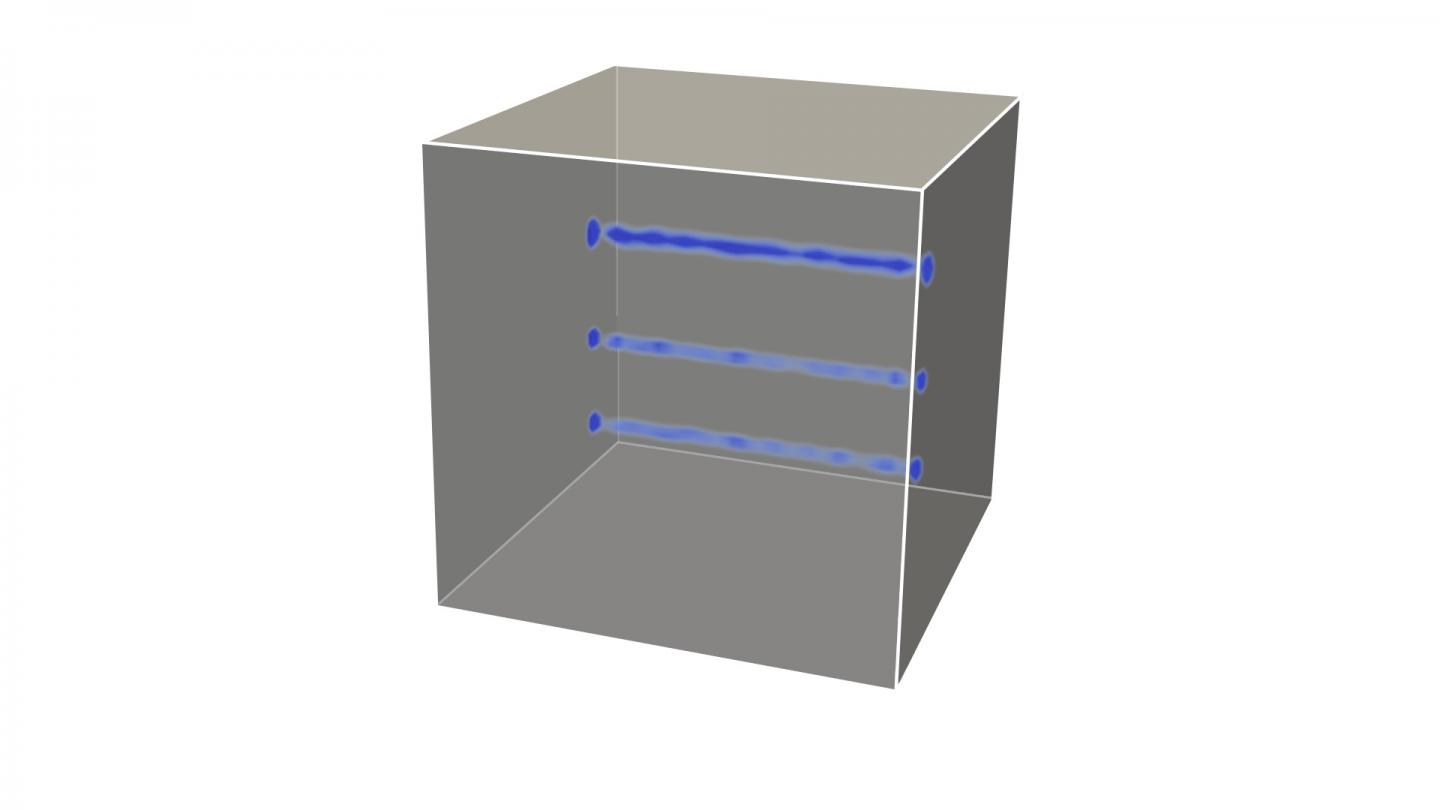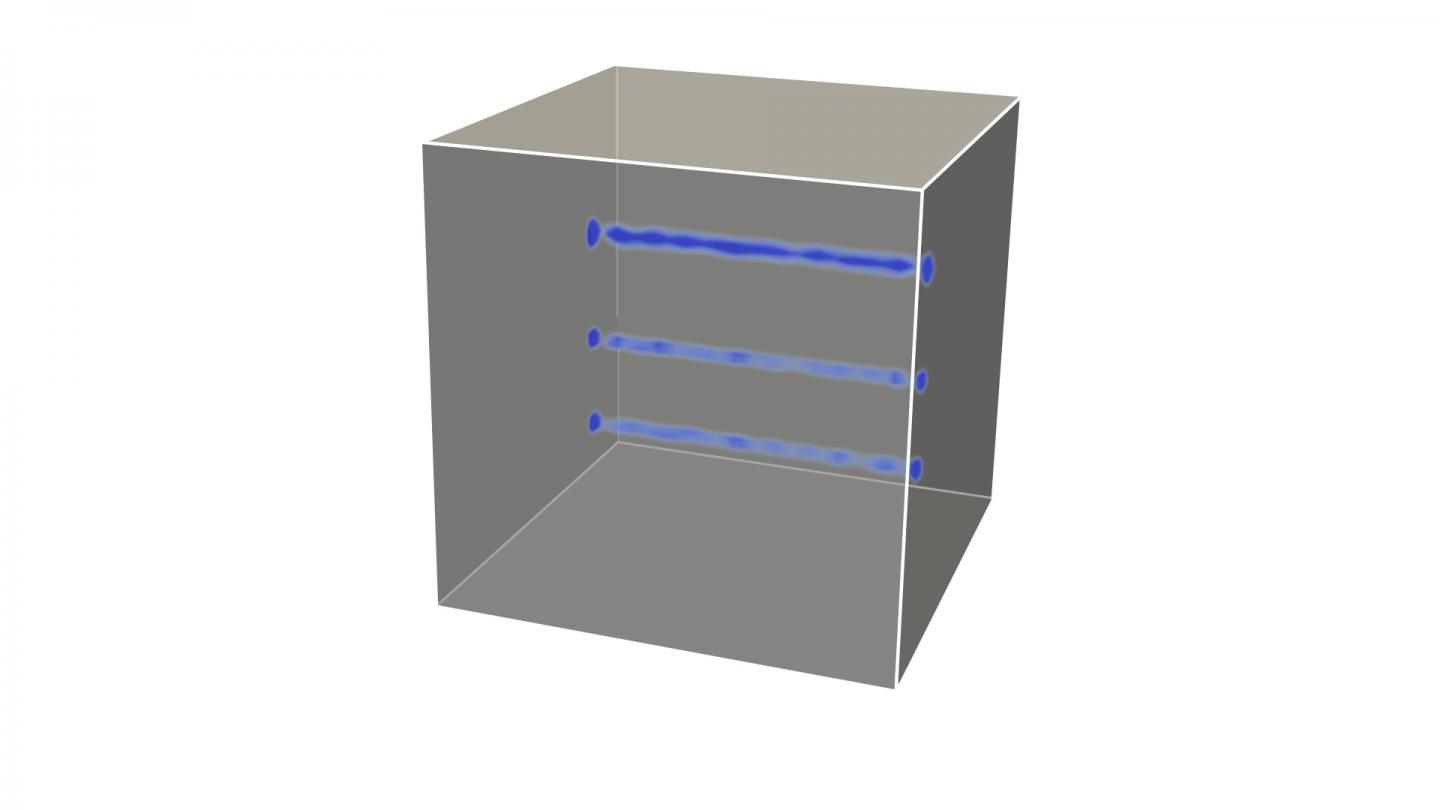
Credit: Chair for Computation in Engineering / TUM
Doctors performing medical check-ups want a full picture of the patient's health without using the scalpel. Engineers who want to investigate the stability of a bridge without cutting into it are in the same position. Non-destructive testing methods play a major role in guaranteeing quality and safety, driving substantial interest in refined methodologies. Researchers at the Technical University of Munich (TUM) have developed a method that gives a precise picture of the inner world of objects combining a computerized model and experiment.
Ultrasound measurements are among the most frequently applied technologies in non-destructive testing. The principle is similar to the echolocation that bats use to gather information on their surroundings, possible obstacles and prey using ultrasonic sounds. The bat localizes the direction to an object by sensing which ear registers the echo of a sound first. The smaller the time difference between the arrival of the signals at the respective ear, the smaller the angle between the direction of the sound emitted and the object. If the echo arrives at both ears at the same time and with the same volume, the object is located exactly in the direction the sound was emitted.
Conventional non-destructive testing methods also use this principle to localize structural defects by means of ultrasound. Measurements detect the speed, wavelength and time difference with which the ultrasound waves or their reflections arrive at sensors mounted on the surface of the test object. These measurements are then compared with data from a non-defective reference object to expose variances. "This standard procedure can basically be used to identify and localize defects," says Prof. Ernst Rank, head of the TUM Chair for Computation in Engineering. "But it only returns a limited amount of information on their exact position, extent and orientation."
When the whole wave counts
In order to solve this problem, the scientists first mathematically modeled the material properties of the aluminum plates used in the experimental part of their project. They then used this model to calculate the propagation of the ultrasound waves and their reflection. The virtually determined measured values were compared with the results from real experiments in which the ultrasound waves were sent through real aluminum plates.
They discovered that the measured values of the virtual and real sensors differed from one another, since special factors within the structure can lead to a specific scattering or refraction of the ultrasound waves. The researchers used a trick to get around this error source: The difference between measured real and virtual waves at the sensors is reintroduced as a signal and used to calculate an improved model. This method, referred to as waveform inversion, thus utilizes the entire information content of the wave field measured.
The effort is worth it
This method, developed in the 1980s by the Spanish geophysicist Albert Tarantola, was long considered practically unfeasible due to the very large amount of data required. It was not until the development of innovative algorithms and advances in computer technology in recent years that the highly computation-intensive application of wave form inversion could be realized. "We can surely ask ourselves whether the additional computational effort is worth it," says information scientist and mathematician Robert Seidl. "But when we look at the benefits of our method, the answer has to be yes, the effort is more than worth it."
One of the most important tasks of the near future will be applying and validating wave form inversion with real structures in construction and mechanical engineering. This is planned for a research project in which Prof. Rank's team will partner with Prof. Christian Grosse's team at the Chair of Non-destructive Testing (NDT).
###
Publication:
Robert Seidl, Ernst Rank: "Iterative time reversal based flaw identification", Computers & Mathematics with Applications, Volume 72, Issue 4, August 2016, Pages 879-892; http://dx.doi.org/10.1016/j.camwa.2016.05.036
Contact:
Technical University of Munich (TUM)
Dipl.-Math. Robert Seidl
[email protected]
49-89-289-23204
https://www.cie.bv.tum.de/en/
Media Contact
Stefanie Reiffert
[email protected]
49-892-891-0519
@TU_Muenchen
http://www.tum.de
############
Story Source: Materials provided by Scienmag






